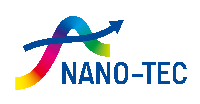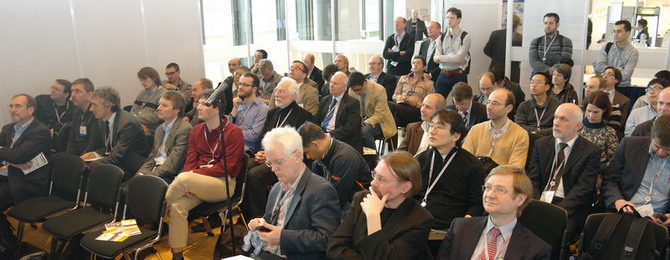
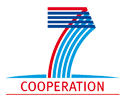
ICT-2010-257964
Session 1 - Solid-state Quantum Computing
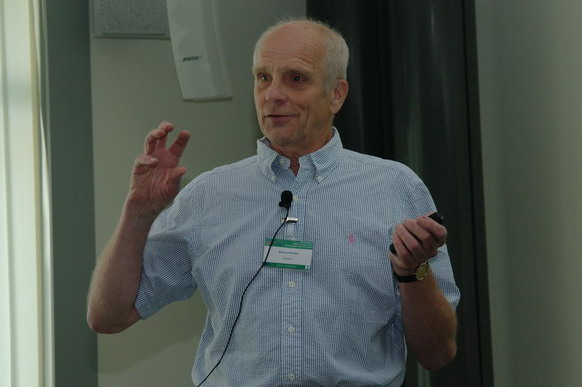 | 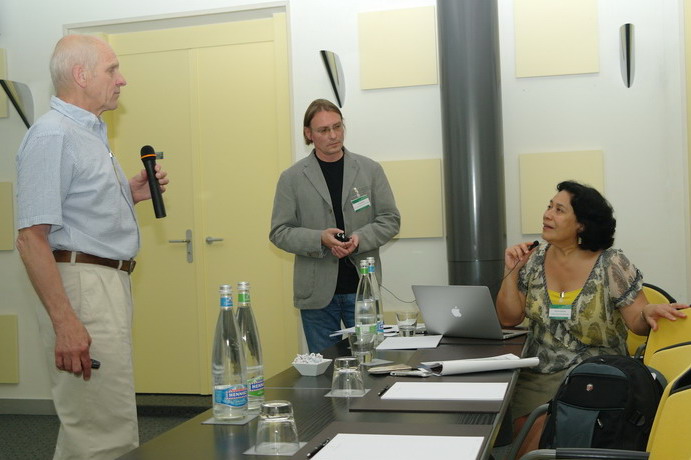 |
| Presenter: Göran Wendin, Chalmers University of Technology, Gothenburg | Discussion on Quantum Computing led by Jouni Ahopleto VTT technical research Centre of Finland, Espoo |
Download the presentation of Göran Wendin
GÖRAN WENDIN, Chalmers University, Gothenburg, Sweden
Professor at Chalmers since 1996. Vice head of MC2 2003-2007. Tekn. Dr. Theor, Phys. 1972. Fellow of the American Physical Society since 1984. Coordinator since the year 2000 of quantum information projects: SQUBIT, SQUBIT-2, EuroSQIP (IP), and currently SOLID (IP). Also NANOMOL (2000-2002) in molecular electronics, and currently SYMONE (UCOMP). More than 170 papers with over 4000 citations (Hirsch index 36). Supervised 16 PhD students. Swedish patent 1999: Superconducting transistor. Main research interests: Quantum information processing. Superconducting nanoelectronics. Transport through single molecules and molecular networks. Neuromorphic computing with molecular electronics. Bionanoelectronics.
Abstract
First of all, let us clearly state that there are no solid-state quantum computers (QC) yet. Or any QC for that matter. QC experiments are going on with 10-15 qubits in molecules (NMR) and ion traps, and there is steady progress, but competitive QC is still far away. Focus is now rather on quantum simulators (QS) to simulate static and dynamical properties of small physical and chemical systems with useful accuracy. Solid-state qubits comprise: superconducting Josephson-junction (SC-JJ) based (charge, flux and phase), quantum dot (QD) (charge, spin), and impurities (electron spin and nuclear spin) in crystallites and in molecules. At present, the most successful approaches are SC JJ-based Transmon qubit systems and spin-based NV centers in diamond. The recent development of these systems is impressive and promising. We now attempt a SWOT analysis:
Strengths: QC is possible: there are no proofs-of principle identifying clear barriers limiting the coherence time. It seems to be an advanced microwave engineering problem, and possibly also a materials science problem. Cavity/circuit QED-cQED. Tansmon-2D-cQED routinely achieves 1-5 µs coherence time, while Transmon-3D-cQED has recently reached nearly 100 µs coherence time. 2D-systems are technologically scalable. 3D systems have potential for scalability, but working solutions need to be developed. So far, scalable 2D architectures with 4 qubits (Saclay) are being tested.
Weaknesses: The DiVincenzo criteria not yet fulfilled. Coherence time still too short. Still no generic functionality - the number of useful problems still very limited. Difficult to see decisive breakthroughs that can lead to an instant paradigm shift. The field is evolutionary. Breakthroughs cannot be planned.
Opportunities: To engineer a functional small QC or QS. To implement the surface code and demonstrate efficient error correction. To implement efficient schemes for optimal control. To develop signficant applications to quantum simulation. To produce, within 5-10 years, a quantum multi-qubit circuit that beats a classical computer on a hard problem. To develop a useful QS that beats a classical computer. To develop classical-quantum hybrid/embedded systems in what concerns both hardware and software. To develop useful QC and QS applications.
Threats: Error correction cannot be implemented in practice: coherence time too short for implentation of all the measurements and operations needed to maintain coherence and to produce meaningful computation/simulation. The QC problems so limited that they have no practical importance.
